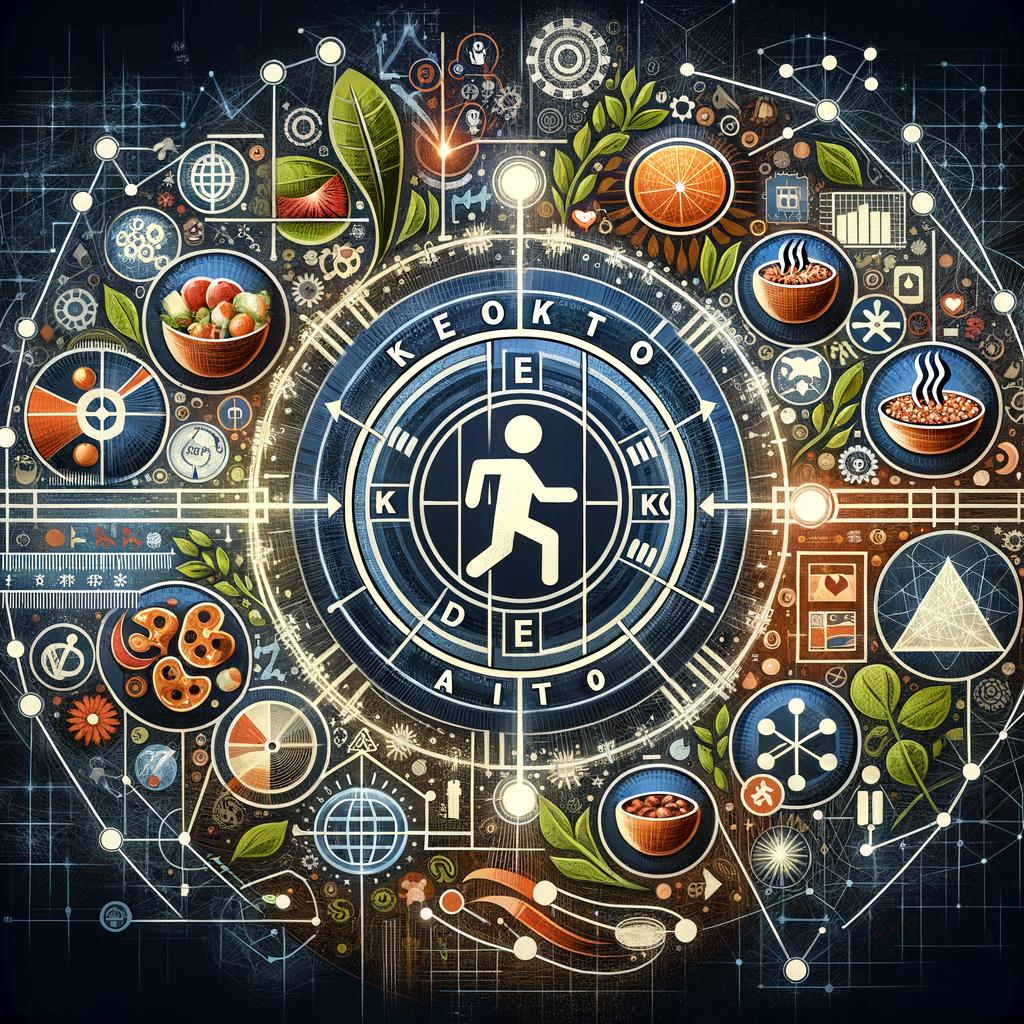
INTRODUCTION
Let’s set the table to talk about a diet that’s been the talk of the town for a while now: “How do you eat a keto diet?” in a nutshell, it all boils down to low carbs and high fat intake. This way, your body gets pushed into a metabolic state called ketosis wherein it burns fat to produce energy instead of carbs. But there’s more to this diet than just a simple macronutrient switch. In this guide, we’ll cover everything from the basics, what to eat and avoid, tips and tricks, to managing potential hurdles along the way.
STARTING A KETO DIET
Starting a keto diet might feel quite a bit like diving headfirst into a pool, unsure about the depth. Fear not! The secret is in understanding the basic premise – lowering the carb intake, while increasing healthy fats. Think of it as a balance beam, with carbs on one end and fats on the other. As the carbs drop, fats rise.
However, kicking off a diet shouldn’t equate to a kickoff from your favorite foods. Eating keto doesn’t mean you have to let go of mouth-watering dishes. You will still be able to eat meat, cheese, eggs, and leafy greens – pretty much a feast, we bet!
PLANNING YOUR MEALS
While keto gives you the possibility to eat most of your favorites, not everything makes the cut to your plate. It’s wise to plan your meals ahead to avoid the confusion and the last-minute cheat.
WHAT TO EAT?
When embarking on the keto boat, protein-rich foods, healthy fats, and low-carb veggies should be your best buddies. Remember, dieting isn’t synonymous with deprivation; it’s an act of substitution. Foods like avocados, cheese, seafood, and meats get a green signal, while we wave goodbye to high-carb foods like pasta, rice, and bread.
NUTIENTS COUNT
It’s not just about ‘what’ to eat, but how much to eat matters too. Keep it simple, silly! Aim for 5-10% of carbs, 20-25% of proteins, and 70-75% of fats in your daily diet.
WHAT TO AVOID?
Just like there are always two sides to a coin, a dietary journey also involves foods to avoid. Any foods high in carbs, added sugars, and unhealthy fats are a big no-no. This might sound like you’re up against the wall, but don’t worry, the keto universe is abundant in tasty and healthy food choices.
ALCOHOLISM AND SWEET TOOTH
While we are on avoiding things, let’s consider the tough ones – alcohol and sweets. Both are high in carb content and regulate your blood sugar levels affecting your ketogenic path. So, it’s better to bid them goodbye (or at least, see them less frequently).
NAVIGATING KETO DIET POTENTIAL HURDLES
Every new path has bumps and the keto journey is no different. You might experience some symptoms like “Keto Flu” as your body adjusts to the new fuel source. But remember, a smooth sea never made a skilled sailor. Stick with it and the results will follow.
HANDLING THE ”KETO FLU”
While it may sound ominous, the “Keto Flu” is just your body adjusting to the shift from carbs to fats. Slight fatigue, headache, or nausea are common, so don’t sweat it. Just like any new routine, your system needs its time to adapt to the keto lifestyle.
CONCLUSION
Empowered with this definitive guide on ‘how to eat a keto diet?’, you’re now ready to kickstart your keto journey! Remember, it’s not about eliminating, but substitifying. Enjoy a variety of healthy, tasty, low-carb, high-fat foods while truly enjoying the process.
FREQUENTLY ASKED QUESTIONS
1. Can I eat fruits on a keto diet?
While fruits are generally high in carbs, there are some like berries that can be consumed in moderation.
2. Does the keto diet cause weight loss?
Yes, a ketogenic diet can aid in weight loss by burning the fat stored in the body.
3. Can I eat dairy on a keto diet?
Yes, but watch out for high-carb dairy products. Choose high-fat, low-carb options like butter and hard cheeses.
4. What is the “Keto Flu”?
It’s a temporary condition experienced when transitioning to a ketogenic diet due to a shift in electrolytes and hydration.
5. Are all fats healthy on a keto diet?
No, it’s recommended to focus on consuming healthy fats like avocados, nuts, seeds, and olive oil. Avoid trans fats and highly processed fats.


